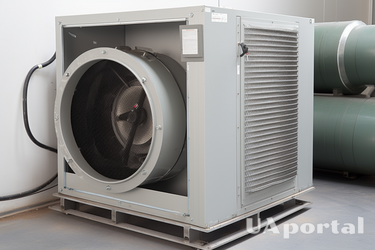Advantages and disadvantages of air recuperators: why they are needed

Air recuperators, also known as heat recovery ventilators (HRVs) or energy recovery ventilators (ERVs), play a crucial role in improving energy efficiency and indoor air quality. UAportal has prepared this material to tell you about the advantages and disadvantages of these devices.
Advantages of air recuperators
First, they increase energy efficiency by extracting heat from exhaust air and transferring it to fresh air. This process reduces the amount of energy needed for heating or cooling, resulting in lower utility bills.
Second, by removing pollutants and allergens, they improve indoor air quality. This feature is especially useful for people who suffer from respiratory conditions or allergies.
Finally, air recovery units contribute to environmental sustainability by reducing carbon dioxide emissions. They help mitigate the environmental impact of heating and cooling systems by reusing heat energy that would otherwise be wasted.
Disadvantages of air recovery units
Air recovery units can be expensive, especially for large-scale applications or retrofitting existing systems.
In addition, their maintenance and cleaning can be time-consuming and expensive. Filters need to be cleaned and replaced regularly to ensure optimal performance and to prevent the accumulation of contaminants.
Air recovery units may not be suitable for all climates. In regions with extreme temperatures or high humidity, these devices have reduced efficiency.
Earlier, UaPortal prepared the pros and cons of hair curling irons.
If you want to get the latest news about the war and events in Ukraine, subscribe to our Telegram channel!
